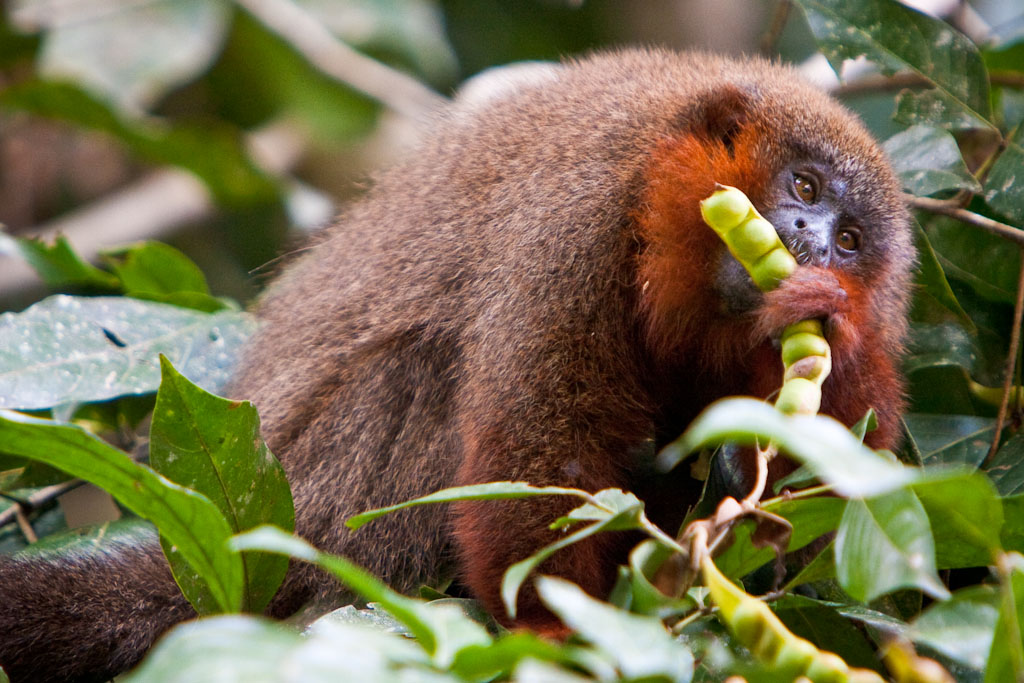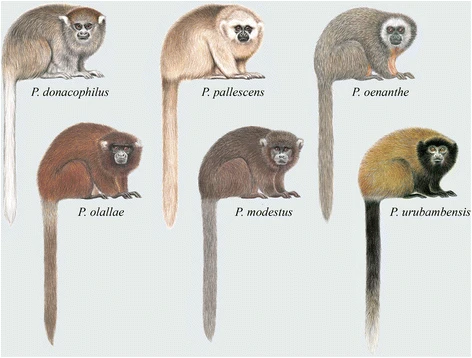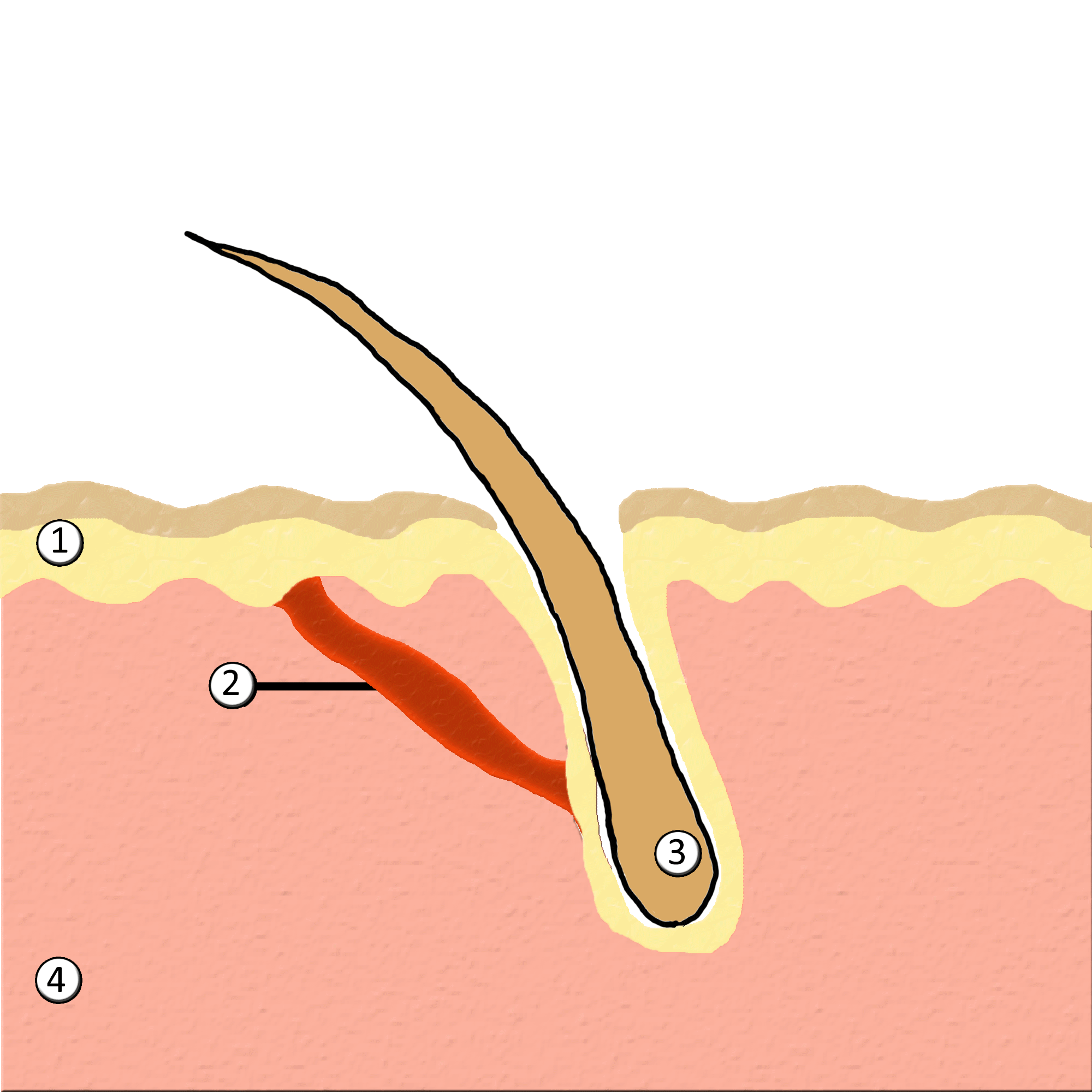|
Coppery Titi
The coppery titi monkey (''Plecturocebus cupreus''), or red titi monkey, is a species of titi monkey, a type of New World monkey, from South America. They are found in the Amazon of Brazil and Peru, and perhaps northern Bolivia. It was described as ''Callithrix cupreus'' in 1823. These monkeys have a lifespan of a little over 20 years. These monkeys eat certain fruits, insects, and plants. They live in monogamous pairs with interesting ways for vocalizing and protecting themselves from predators. Location, habitat and activity Coppery titis typically inhabit lowland tropical and sub-tropical forests in areas that flood seasonally. They can also be found in forest understory habitats, young forests, swamp edges, and bamboo thickets. Their populations are mainly found west of the Rio Madeira in Brazil, around the Rio Huallaga in Peru, within the upper Rio Madre de Dios basin in Peru and Bolivia, near the northern Rio-Maranon-Amazonas area, around the Eastern Cordillera in Peru and ... [...More Info...] [...Related Items...] OR: [Wikipedia] [Google] [Baidu] |
Johann Baptist Von Spix
Johann Baptist Ritter von Spix (9 February 1781 – 13 March 1826) was a German natural history, biologist. From his expedition to Brazil, he brought to Germany a large variety of specimens of plants, insects, mammals, birds, amphibians and fish. They constitute an important basis for today's National Zoological Collection in Munich. Numerous examples of his ethnographic collections, such as dance masks and the like, are now part of the collection of the Museum Five Continents, Museum of Ethnography in Munich. Biography Spix was born in Höchstadt, in present-day Middle Franconia, as the seventh of eleven children. His childhood home is the site of the Spix Museum, open to the public since 2004. He studied philosophy in Bamberg and graduated with a doctoral degree. Later he studied theology in Würzburg. After attending lectures of the young professor Friedrich Wilhelm Joseph Schelling, F. W. J. Schelling, Spix became interested in nature. He quit his theology studi ... [...More Info...] [...Related Items...] OR: [Wikipedia] [Google] [Baidu] |
Hawk
Hawks are bird of prey, birds of prey of the family Accipitridae. They are widely distributed and are found on all continents except Antarctica. * The subfamily Accipitrinae includes goshawks, sparrowhawks, sharp-shinned hawks and others. This subfamily are mainly woodland birds with long tails and high visual acuity. They hunt by dashing suddenly from a concealed perch. * In America, members of the ''Buteo'' group are also called hawks; this group is called buzzards in other parts of the world. Generally, buteos have broad wings and sturdy builds. They are relatively larger-winged, shorter-tailed and fly further distances in open areas than accipiters. Buteos descend or pounce on their prey rather than hunting in a fast horizontal pursuit. The terms ''accipitrine hawk'' and ''buteonine hawk'' are used to distinguish between the types in regions where ''hawk'' applies to both. The term ''"true hawk"'' is sometimes used for the accipitrine hawks in regions where ''buzzard'' i ... [...More Info...] [...Related Items...] OR: [Wikipedia] [Google] [Baidu] |
Mammals Of Peru
Mammals () are a group of vertebrate animals constituting the class Mammalia (), characterized by the presence of mammary glands which in females produce milk for feeding (nursing) their young, a neocortex (a region of the brain), fur or hair, and three middle ear bones. These characteristics distinguish them from reptiles (including birds) from which they diverged in the Carboniferous, over 300 million years ago. Around 6,400 extant species of mammals have been described divided into 29 orders. The largest orders, in terms of number of species, are the rodents, bats, and Eulipotyphla (hedgehogs, moles, shrews, and others). The next three are the Primates (including humans, apes, monkeys, and others), the Artiodactyla ( cetaceans and even-toed ungulates), and the Carnivora (cats, dogs, seals, and others). In terms of cladistics, which reflects evolutionary history, mammals are the only living members of the Synapsida (synapsids); this clade, together with Saurop ... [...More Info...] [...Related Items...] OR: [Wikipedia] [Google] [Baidu] |
Mammals Of Brazil
Brazil has the largest mammal diversity in the world, with more than 600 described species and more likely to be discovered. According to the International Union for Conservation of Nature, 66 of these species are endangered, and 40% of the threatened taxa belong to the primate group. 658 species are listed. The following tags are used to highlight each species' conservation status as assessed by the International Union for Conservation of Nature: Some species were assessed using an earlier set of criteria. Species assessed using this system have the following instead of near threatened and least concern categories: Infraclass: Metatheria Order: Didelphimorphia * Family: Caluromyidae ** Genus: '' Caluromys'' *** Brown-eared woolly opossum, ''C. lanatus'' LC *** Bare-tailed woolly opossum, ''C. philander'' LC * Family: Didelphidae ** Genus: ''Caluromysiops'' *** Black-shouldered opossum, ''Caluromysiops irrupta'' LC ** Genus: ''Glironia'' *** Bushy-tailed opossum, ' ... [...More Info...] [...Related Items...] OR: [Wikipedia] [Google] [Baidu] |
Plecturocebus
''Plecturocebus'' is one of three genera of titi monkeys. Historically, these monkeys were monogeneric, being placed in a single genus: ''Callicebus'' Thomas, 1903. Owing to the great diversity found across titi monkey species, a new genus-level taxonomy was proposed in 2016 that recognises three genera within the subfamily Callicebinae; ''Plecturocebus'' Byrne et al., 2016 for the Amazonian and Chaco titis of the ''moloch'' and ''donacophilus'' groups; ''Cheracebus ''Cheracebus'' is one of three genera of titi monkeys. Monkeys in this genus, particularly the type species '' Cheracebus lugens'', are sometimes referred to as widow titi monkeys. Historically, titis were monogeneric, comprising only the genus ...'' Byrne et al., 2016 for the species of the ''torquatus'' group (Widow titis); and ''Callicebus'' Thomas, 1903 ''sensu stricto'', for species of the Atlantic Forest ''personatus'' group. ''Plecturocebus'' is derived from the Latin forms of three Greek words: plektos, m ... [...More Info...] [...Related Items...] OR: [Wikipedia] [Google] [Baidu] |
Goose Bumps
Goose bumps, goosebumps or goose-pimples are the bumps on a person's skin at the base of body hairs which may involuntarily develop when a person is tickled, cold or experiencing strong emotions such as fear, euphoria or sexual arousal. The formation of goose bumps in humans under stress is considered to be a vestigial reflex. Its function in other apes is to raise the body's hair, and would have made human ancestors appear larger to scare off predators or to increase the amount of air trapped in the fur to make it more insulating. The reflex of producing goose bumps is known as piloerection or the pilomotor reflex, or, more traditionally, horripilation. It occurs in many mammals; a prominent example is porcupines, which raise their quills when threatened, or sea otters when they encounter sharks or other predators. Anatomy and biology Goose bumps are created when tiny muscles at the base of each hair, known as ''arrector pili muscles'', contract and pull the hair straight u ... [...More Info...] [...Related Items...] OR: [Wikipedia] [Google] [Baidu] |
Least Concern
A least-concern species is a species that has been categorized by the International Union for Conservation of Nature (IUCN) as evaluated as not being a focus of species conservation because the specific species is still plentiful in the wild. They do not qualify as threatened, near threatened, or (before 2001) conservation dependent. Species cannot be assigned the "Least Concern" category unless they have had their population status evaluated. That is, adequate information is needed to make a direct, or indirect, assessment of its risk of extinction based on its distribution or population status. Evaluation Since 2001 the category has had the abbreviation "LC", following the IUCN 2001 Categories & Criteria (version 3.1). Before 2001 "least concern" was a subcategory of the "Lower Risk" category and assigned the code "LR/lc" or lc. Around 20% of least concern taxa (3261 of 15636) in the IUCN database still use the code "LR/lc", which indicates they have not been re-evaluate ... [...More Info...] [...Related Items...] OR: [Wikipedia] [Google] [Baidu] |
Red List Of Threatened Species
The International Union for Conservation of Nature (IUCN) Red List of Threatened Species, also known as the IUCN Red List or Red Data Book, founded in 1964, is the world's most comprehensive inventory of the global conservation status of biological species. It uses a set of precise criteria to evaluate the extinction risk of thousands of species and subspecies. These criteria are relevant to all species and all regions of the world. With its strong scientific base, the IUCN Red List is recognized as the most authoritative guide to the status of biological diversity. A series of Regional Red Lists are produced by countries or organizations, which assess the risk of extinction to species within a political management unit. The aim of the IUCN Red List is to convey the urgency of conservation issues to the public and policy makers, as well as help the international community to reduce species extinction. According to IUCN the formally stated goals of the Red List are to provide scie ... [...More Info...] [...Related Items...] OR: [Wikipedia] [Google] [Baidu] |
International Union For Conservation Of Nature
The International Union for Conservation of Nature (IUCN; officially International Union for Conservation of Nature and Natural Resources) is an international organization working in the field of nature conservation and sustainable use of natural resources. It is involved in data gathering and analysis, research, field projects, advocacy, and education. IUCN's mission is to "influence, encourage and assist societies throughout the world to conserve nature and to ensure that any use of natural resources is equitable and ecologically sustainable". Over the past decades, IUCN has widened its focus beyond conservation ecology and now incorporates issues related to sustainable development in its projects. IUCN does not itself aim to mobilize the public in support of nature conservation. It tries to influence the actions of governments, business and other stakeholders by providing information and advice and through building partnerships. The organization is best known to the wider pu ... [...More Info...] [...Related Items...] OR: [Wikipedia] [Google] [Baidu] |
Capuchin Monkey
The capuchin monkeys () are New World monkeys of the subfamily Cebinae. They are readily identified as the " organ grinder" monkey, and have been used in many movies and television shows. The range of capuchin monkeys includes some tropical forests in Central America and South America as far south as northern Argentina. In Central America, where they are called white-faced monkeys ("carablanca"), they usually occupy the wet lowland forests on the Caribbean coast of Costa Rica and Panama and deciduous dry forest on the Pacific coast. Etymology The word "capuchin" derives from a group of friars named the Order of Friars Minor Capuchin, an offshoot from the Franciscans, who wear brown robes with large hoods. When Portuguese explorers reached the Americas in the 15th century, they found small monkeys whose coloring resembled these friars, especially when in their robes with hoods down, and named them capuchins. When the scientists described a specimen (thought to be a golden-bel ... [...More Info...] [...Related Items...] OR: [Wikipedia] [Google] [Baidu] |
Squirrel Monkey
Squirrel monkeys are New World monkeys of the genus ''Saimiri''. ''Saimiri'' is the only genus in the subfamily Saimirinae. The name of the genus is of Tupi origin (''sai-mirím'' or ''çai-mbirín'', with ''sai'' meaning 'monkey' and ''mirím'' meaning 'small') and was also used as an English name by early researchers. Squirrel monkeys live in the tropical forests of Central and South America in the canopy layer. Most species have parapatric or allopatric ranges in the Amazon, while ''S. oerstedii'' is found disjunctly in Costa Rica and Panama. There are two main groups of squirrel monkeys recognized. They are differentiated based on the shape of the white coloration above the eyes. In total there are 5 recognized species. Squirrel monkeys have short and close fur colored black at the shoulders, yellow or orange fur along the back and extremities, and white on the face. Squirrel monkeys have determined breeding seasons which involve large fluctuations in hormones and there is ... [...More Info...] [...Related Items...] OR: [Wikipedia] [Google] [Baidu] |
Gray-headed Kite
The gray-headed kite (''Leptodon cayanensis'') is a raptor found in open woodland and swamp forests. It shares the genus ''Leptodon'' with the extremely rare white-collared kite. It breeds from eastern Mexico and Trinidad south to Peru, Bolivia, Brazil and northern Argentina Argentina (), officially the Argentine Republic ( es, link=no, República Argentina), is a country in the southern half of South America. Argentina covers an area of , making it the second-largest country in South America after Brazil, th .... Description The gray-headed kite is 46–53 cm in length and weighs 410-605 g. The adult has a grey head, black upperparts, white underparts, and a black tail with two or three white bars. The bill is blue and the legs grey. The flight is a deliberate ''flap-flap-glide''. Immature birds have three colour morphs; the light phase is similar to the adult, but has a white head and neck, with a black crown and eyestripe, black bill and yellow legs, closely r ... [...More Info...] [...Related Items...] OR: [Wikipedia] [Google] [Baidu] |








